Hiking poles can be a crucial part of any hiker’s equipment. Not only do they help provide balance and stability, but they can also reduce the strain on your knees and legs during long hikes.
However, using hiking poles incorrectly can actually cause more harm than good. This is where hiking pole straps come in.
By using them correctly, you can maximize the benefits of your hiking poles and minimize the risk of injury.
In this article, we’ll guide you through how to use hiking pole straps effectively.
Contents
Basic Step-by-Step Instructions:
Hiking pole straps are adjustable straps that attach to the handles of hiking poles and loop around your wrist.
They are designed to help transfer the weight of the poles from your hands to your wrists, reducing fatigue and preventing your hands from cramping during long hikes.
When used correctly, hiking pole straps can also help provide stability and control during uphill and downhill hikes.
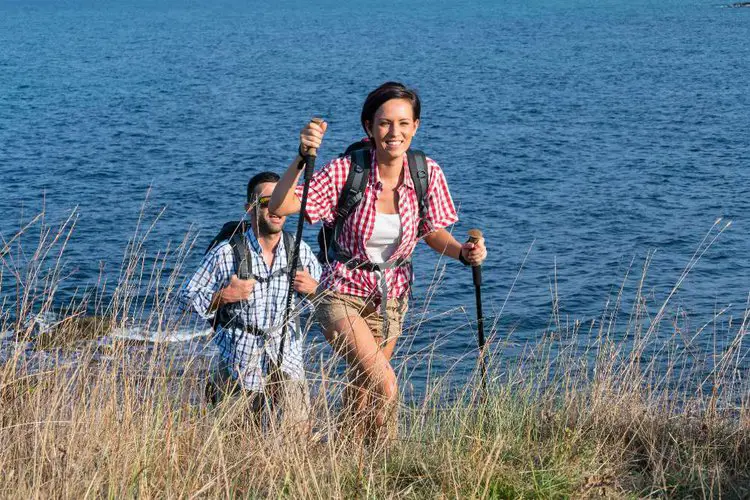
Step 1: Adjust the Straps and attach them to the poles
Before you start hiking, it’s important to make sure your hiking pole straps are adjusted to the right length.
To do this, put your hand through the strap from the bottom and grasp the handle of the pole. Adjust the strap so that it fits snugly around your wrist but still allows your hand to move freely.
You should be able to comfortably grip the handle without having to hold onto the strap too tightly.
Once you have adjusted the straps, it’s time to attach them to the poles. To do this, locate the small loop on the bottom of the strap.
This loop should be positioned in line with the pole’s handle. Slip the loop over the handle, making sure it is securely in place.
Step 2: Insert Your Hand

With the strap attached to the pole, insert your hand through the loop from the bottom (as shown in the video) so that the strap is now around your wrist.
Make sure the strap is snug but not too tight. You should be able to move your hand and fingers freely with the thumb resting comfortably on the top of the pole. Plus, the strap should prevent the pole from slipping out of your hand.
Step 3: Adjust Your Grip
With your hand through the strap, adjust your grip on the pole so that it is comfortable for you.
Some hikers prefer to grip the pole lower down, while others prefer to grip it higher up. Experiment with different hand positions to find what works best for you.
Step 4: Use the Straps
Now that you’re properly strapped in, it’s time to start hiking!
As you walk, the straps will help transfer the weight of the poles from your hands to your wrists, which can reduce fatigue and prevent your hands from cramping.
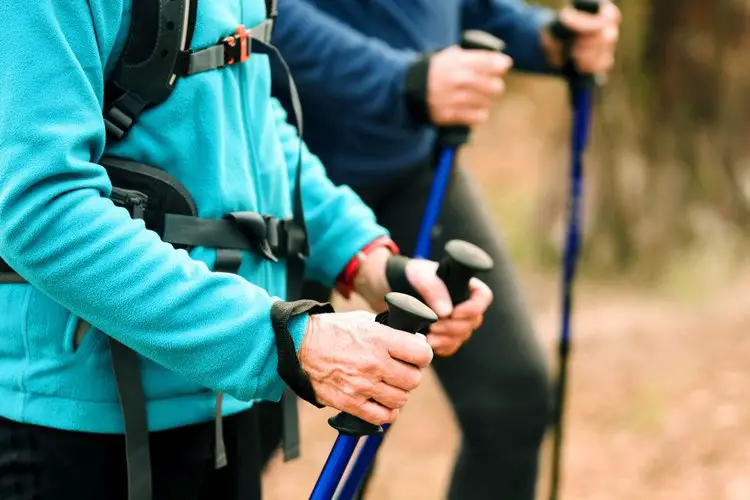
When you’re going uphill, you can push down on the poles to help propel yourself forward.
When you’re going downhill, you can use the straps to help control your descent.
Step 5: Release the Straps
When you need to take a break or remove the poles, it’s important to release the straps properly.
To do this, simply slip your hand out of the loop and remove the pole from your hand.
Avoid the temptation to just pull your hand out of the strap without releasing it properly, as this can cause the strap to become twisted or tangled.
Some specific techniques for using hiking pole straps in different types of terrain and environments
By practicing these techniques and experimenting with different grips and techniques, you can find what works best for you and make the most of your hiking poles and straps.
Keep in mind that these are general guidelines, and you may need to adjust your technique based on your individual needs and preferences.
Uphill hiking
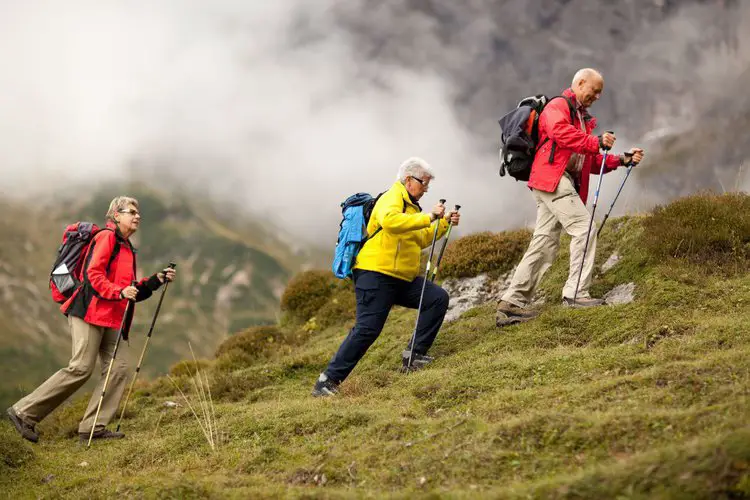
When hiking uphill, adjust your grip on the poles so that your hands are slightly above the straps.
This allows you to push down on the poles and use your upper body strength to propel yourself forward.
With each step, plant the poles slightly ahead of you and use them to push off and maintain your momentum.
Downhill hiking

When hiking downhill, adjust your grip on the poles so that your hands are slightly below the straps.
This allows you to place your weight on the poles and use them to control your descent. Plant the poles slightly behind you for each step and use them to slow your descent and provide additional stability.
Rocky or uneven terrain

When hiking on rocky or uneven terrain, adjust your grip on the poles so that your hands are slightly below the straps.
This allows you to place your weight on the poles and use them to provide additional stability and balance.
Place the pole tips firmly on the ground and use them to maintain your footing and prevent slips and falls.
Wet or slippery conditions
When hiking in wet or slippery conditions, adjust the straps to make them tighter around your wrist.
This can help prevent the poles from slipping out of your hand and provide additional grip and stability.
Keep the poles stable on the ground and use them to maintain your footing and prevent you from slipping.
Note: You can use the straps to help transfer weight from your hands to your wrists, reducing fatigue and allowing you to maintain your grip on the poles for longer periods.
Common Mistakes to Avoid When Using Hiking Pole Straps
By avoiding these common mistakes below and following the tips and techniques outlined in this article, you can make the most of your hiking pole straps and enjoy a safer, more comfortable hiking experience.
One of the most common mistakes when using hiking pole straps is not adjusting them properly or wearing them the wrong way.
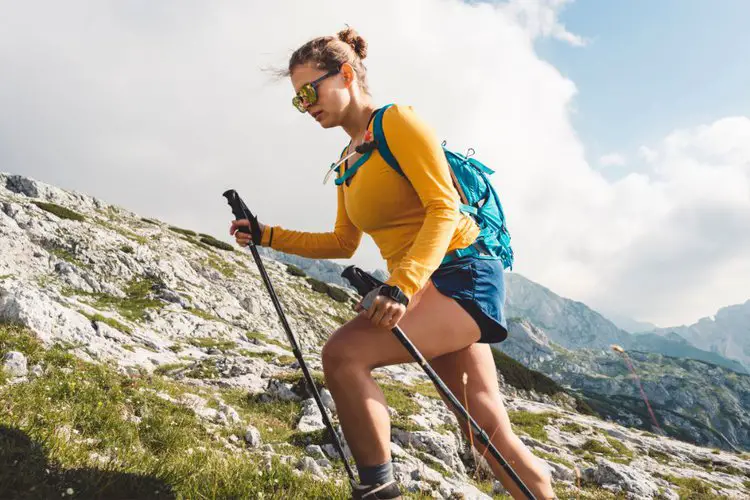
- If the straps are too loose, you may not be able to transfer weight effectively from your hands to your wrists, and the poles may slip out of your grip.
- If the straps are too tight, they can cause discomfort and restrict blood flow to your hands.
- Remember to put your hands through the straps from the bottom to avoid breaking your thumb on long trips.
Make sure to adjust the straps to fit your hand size and shape, and experiment with different levels of tightness until you find what works best for you.
Choosing hiking pole straps
When it comes to choosing hiking pole straps that are appropriate for the terrain and environment you’ll be hiking in, there are a few things to consider:
Wet or humid conditions
If you plan on hiking in wet or humid conditions, you’ll want to look for hiking pole straps that are moisture-resistant.
This will help prevent the straps from becoming slippery or uncomfortable, which can be dangerous if you rely on your poles for stability.
Some straps may be made from materials that are naturally moisture-resistant, while others may be treated with a water-resistant coating.
Good options include straps made from synthetic materials like nylon, polyester, or neoprene.
Rugged or rocky terrain
If you plan on hiking in rugged or rocky terrain, you’ll want to look for hiking pole straps that have reinforced stitching or other durability features.
This will help ensure that the straps can withstand the wear and tear of the trail, and won’t come apart or become damaged during your hike.
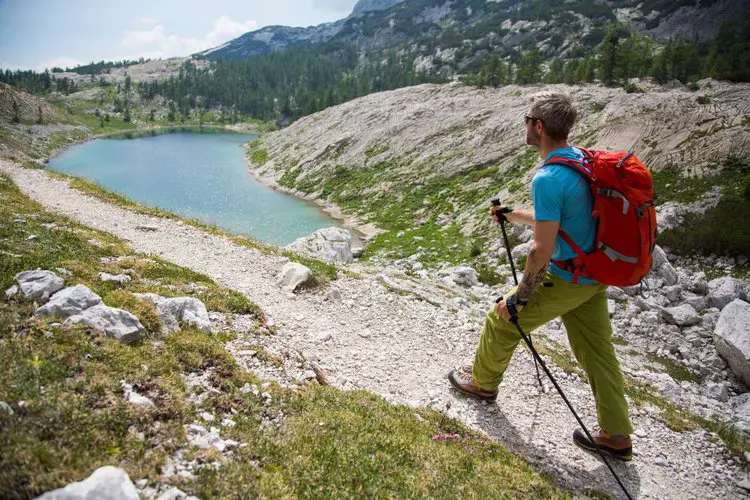
Some straps may also be made from materials that are naturally more durable, such as neoprene.
Straps made from durable materials like leather or those with added padding or reinforcement can also be a good choice.
Snow or ice
If you plan on hiking in snowy or icy conditions, you may want to consider using snow baskets on the ends of your hiking poles.
These can help prevent the poles from sinking into the snow, and provide more stability on slippery surfaces.
Some hiking pole straps may also be designed with winter conditions in mind, and may have additional insulation or waterproofing features.
For example, straps made from neoprene or other synthetic materials may be designed to retain heat and prevent water from seeping in.
Hot or cold temperatures
Finally, it’s worth considering the temperature range that your hiking pole straps will be exposed to.
Some materials may be more prone to cracking or becoming brittle in extreme cold temperatures, while others may become uncomfortably hot in direct sunlight.
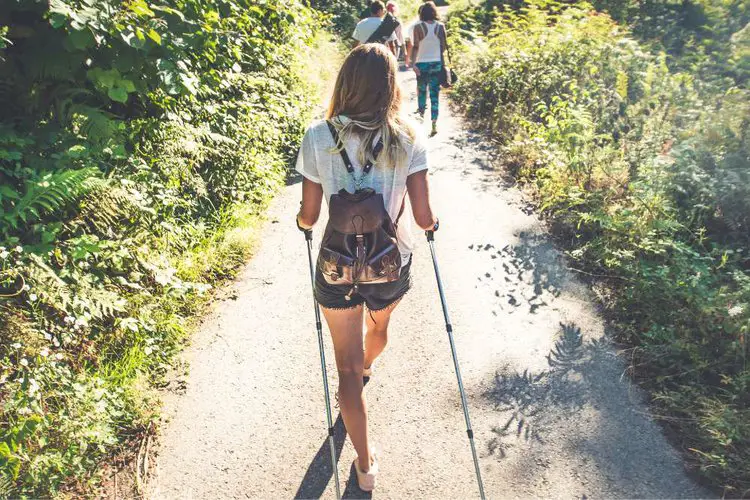
Look for straps that are designed to perform well in the temperature range you’ll be hiking in, and consider using additional gear (such as gloves or hand warmers) if needed to stay comfortable.
Materials like cork, rubber, or foam can be a good option as they are more temperature resistant than some synthetic materials.
Conclusion
Using hiking pole straps correctly can help you get the most out of your hiking poles while minimizing the risk of injury.
By following these simple step-by-step instructions, you can use your hiking pole straps with confidence and get the most out of your hiking experience.
Remember, hiking pole straps are a helpful tool, but they’re only effective if you use them correctly!

